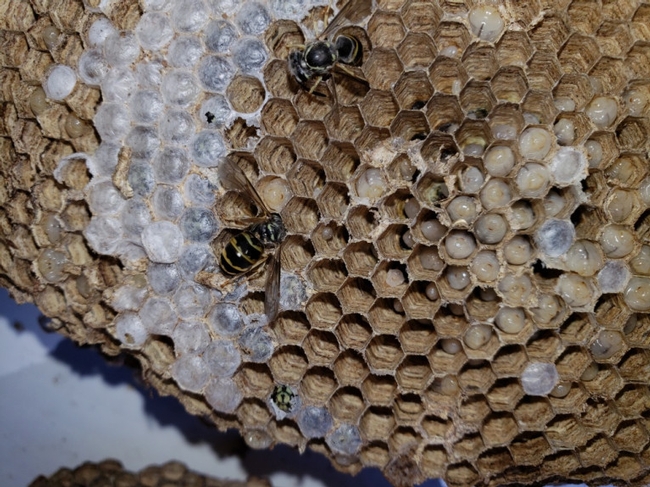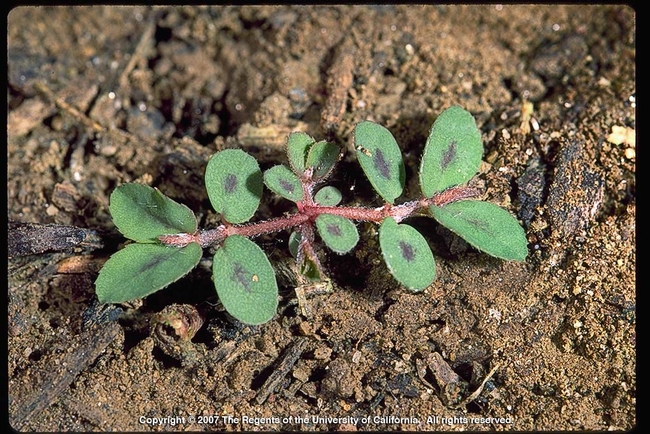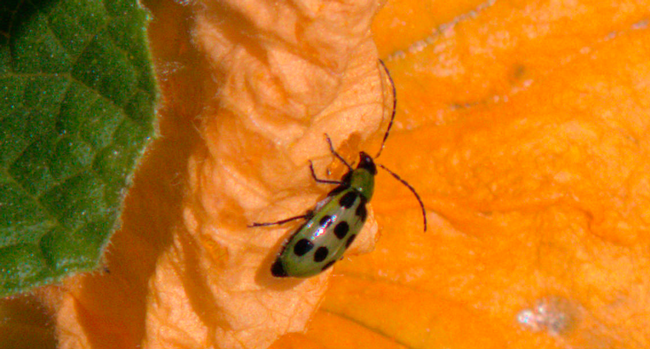
However, where they decide to nest can quickly turn them from friend to foe!
I was recently weeding a planting bed near our barbecue when I was stung in the abdomen and chest by a couple of aggressive little wasps. Our outdoor fire pit and dining area are in the same general area and we, and our dog, hang out there all the time. The wasps were flying around a stacked-rock retaining wall, so I sprayed some hornet and wasp spray into the crevices and figured I had solved the problem.
But a week later when I saw several wasps flying around the same area, I was surprised to see them emerging from the ground behind the wall. I decided I needed some help with the situation and immediately called Deb Conwayn with GirlzWurk in Saratoga. Deb is a beekeeper, does bee removal and relocation, and sells amazing honey. I was lucky to reach her right away and she came to our house the same day.
When we removed a large section of the stacked wall and dug a few feet into the soil, we found a huge, eight-layer yellowjacket nest. Deb guessed that there were at least 5,000 live yellowjackets in there! She smoked and removed the hive and vacuumed up the wasps. Apparently, they had created their nest in an abandoned gopher hole.
These yellowjackets were smaller and darker than most that I had seen so I sent the photos off to UC Davis for identification. Per Lynn Kimsey, director of the Bohart Museum of Entomology and professor of entomology at Davis, mine was a Vespula vulgaris, or common wasp. “It's the second most abundant yellowjacket in California after Pensylvanica, the so-called western yellowjacket.” said Kimsey.
Vesplua is a small genus of social wasps. They, along with their sister genus, Dolichovespula, are known as yellowjackets or yellow jackets. Vespula vulgaris have a stronger tendency to nest in the ground than other species.
Their normal habitat is dry grasslands and woodlands, however, they have certainly adapted to our urban areas. Only the queens survive the winter. They emerge in the spring to build their paper-like nests (made from chewed wood pulp) in hidden cavities like animal burrows, tree stumps, or in crevices like rock walls.
The initial brood of larva, which is cared for by the queen, hatch into workers who continue to build and protect the nest. They also care for the subsequent broods. Workers only live about two to four weeks and are replaced throughout the summer.
Again, all wasps can be beneficial and definitely serve a purpose. But, if you or a family member are allergic to their venom or they have taken up residence in a place that is intolerable, you may want to take action to relocate or eradicate them.
Deb Conway services most of the South Bay and can be reached at 408-373-0454. Find other good bee removal services at BeeRemovalSource.
by UC Master Gardener Rebecca Jepsen
This article first appeared in the October 28, 2018 print issue of the San Jose Mercury News.

The tarantula hawk (Pepsis formosa) is actually a spider wasp that can grow up to 2 1/2 inches long with a 4-inch-wide wingspan. This one had a beautiful blackish-blue, metallic body with vivid, bright orange wings. Some have shiny blue/black wings that match its body. It has long black antennae and six velvety black legs with hook-like claws on the ends.
As the name indicates, they prey on tarantulas, which they need as hosts for their larvae. (I have only seen one tarantula on my property in the six plus years we have lived here).
Only the females sting. She will fly low to the ground looking for spiders. When she finds a tarantula's burrow she will disturb the web, mimicking trapped-prey. When the tarantula emerges to inspect its web, she will sting and paralyze it. She will then drag the tarantula back into its burrow, lay a single egg on its body and then cover over the opening to the burrow.
When the egg hatches, the larva will feed on the still-living spider, avoiding the vital organs in order to keep the host alive as long as possible. After approximately three weeks to a month, the larva will emerge from the now-dead tarantula's body.
Adult tarantula hawks feed on pollen and nectar from flowers, and juice from fruits and berries. They seem to be especially attracted to milkweed, soapberry trees, and mesquite trees. Males live approximately two months or less; females can live longer.
Although the tarantula wasp is not aggressive and stings are relatively rare, it is reportedly one of the most painful stings of any insect in the world. The stinger is a fierce 1/3 of an inch long. The pain is said to be absolutely excruciating and so debilitating that you can lose control of your body. If you get stung, it is recommended that you lay down as quickly as possible to avoid stumbling and falling and causing further injury. An intense, burning pain will last for about 5 minutes. You may experience swelling and soreness around the area for a few days – but it will pass and is not life-threatening.
Fun facts:
- Species of tarantula hawks have been seen as far north as Utah and as far south as Argentina, with more than 250 species living in South America.
- Fifteen species of Pepsis are found in the United States, most of them residing in the desert.
- They are generally active during the summer months. They avoid the hottest part of the day (mine was out in early evening).
- Due to their extremely large stingers, they have very few predators; only roadrunners and bullfrogs will take them on.
- The tarantula hawk is the state insect of New Mexico.
So, definitely admire this wasp from afar, but avoid contact, and make sure your kids and pets do as well!
by UC Master Gardener Rebecca Jepsen
This article first appeared in the August 26, 2018 print issue of the San Jose Mercury News.
Growing plants in the off-season is easy, productive and beneficial to our native birds, bees and bugs

If you aren't planning to plant an edible garden this fall, at least plant some cover crops wherever you normally grow your summer garden – even in your raised beds. Cover crops are excellent for “fixing soil”. They not only provide needed nitrogen, they also help loosen soil, suppress weeds, and support native birds and bugs with their flowers and seeds.
Fava beans are one of my favorite cover crops, but they will grow for several months.
If you want to grow a quick cover and still have time for your cool-season garden, try buckwheat. It will germinate in about five days and be ready to turn under in about a month.
To get all the education and plants you need, don't miss the upcoming Fall Garden Market at Martial Cottle Park's Harvest Festival on October 6.
Celebrating the agricultural heritage of Santa Clara Valley and the newest park in the county, the festival will feature food, entertainment, park tours and more. Master Gardeners will host children's activities, a Green Elephant sale, and a Help Desk LIVE! where you can ask questions and bring in a plant or pest sample to have it diagnosed.
There will be educational talks all day long including “Growing Great Garlic”, “Growing Cool-Season Crops” and “Designing with Succulents”. You can also visit the Habitat, Pollinator and California Native gardens that are on-site.
If you haven't tried growing Asian greens, you are missing out. They are easy to grow, very productive and can be used in salads, stir-fries, and soups. There will Chinese broccoli, pak choi, and tatsoi at the market.
How about some Italian greens such as chicory, escarole, frisee, radicchio, and rapini? There will also be dozens of varieties of beets, broccoli, cabbage and cauliflower, chard and kale. And, if salad is your thing, you will have a dozen varieties of lettuce to choose from – or like me, you can plant them all and have your own salad bar! There will also be peas, turnips, onions and even kohlrabi, collards, rutabaga, turnips, and artichokes.
Also, don't miss out on the flowering beauties: Agrostemma, Clarkia, Linaria, Snapdragons and Sweet Peas. Flowers not only add beauty, but they also bring in the bees and beneficial insects that are necessary for pollination and fending off the “bad bugs” that can damage your garden.
Growing your own food, whether with your family or just on your own, is not only enjoyable, it is truly important! You will conserve water, waste less (no one wants to throw away what they have worked hard to grow), avoid using harmful chemicals, nurture your soil and help support and feed our native birds, bees and bugs. And most importantly, you will make a huge and positive impact on your children – kids will actually eat what they grow! So, head on out to one of our upcoming Fall Markets and dig in!
Here are the details for the three upcoming Santa Clara County Master Gardeners Fall markets. The main event is the one at Martial Cottle Park on October 6. Entrance is free, but there is a $6 fee to park.
September 29, 2018, 10 a.m. – 12:00 p.m.
Palo Alto Demo Garden
851 Center Dr.
Palo Alto, CA
October 6, 2018, 10 a.m. – 3 p.m.
Martial Cottle Park
5283 Snell Ave.
San Jose, CA
October 13, 2018, 10 a.m. – until sold out
Guglielmo Winery
1480 East Main Ave.
Morgan Hill, CA
by UC Master Gardener Rebecca Jepsen
Photo by Pam Roper
This article first appeared in the September 23, 2018 print issue of the San Jose Mercury News.
Garden threats turned opportunities

Take a walk with new eyes: Most people walk through their garden with specific chores in mind. Those mental notes are handy for getting things done, but sometimes they can interfere with our ability to see the bigger picture. Try to see what works and what doesn't at the seasonal level, rather than noticing which plants need watering or weeding right now. Walking through your garden with these new eyes will help you identify three strengths and three threats within the landscape.
Three threats: Gardens and landscapes are not the tranquil sanctuaries they appear to be — they are battlegrounds. Plants, insects, pathogens, microbes, and many more are constantly battling one another for limited resources. Which three things cause the most trouble for your landscape? Is it slugs and snails? Aphids? Compacted soil? Is the soil too alkaline? By identifying the three biggest problems faced in your garden or landscape, you can focus your efforts specifically on them. Very often, correcting the biggest problems in a landscape improves overall plant health enough that they can handle the smaller problems on their own — and you can relax in the shade!
Three strengths: Every garden has its strengths. It doesn't matter what your garden's strengths are, but you cannot take advantage of them until they have been identified. Walk through your landscape and ask yourself which plants cause you the least amount of trouble. Which areas seem to have less pest or disease problems?
What types of weeds seem to turn up consistently? These conditions and plants can be used as indicators of what works best in your garden. After you pull weeds, ask yourself why those particular species are so successful in your yard. If most of those weeds have deep taproots (dandelions, mallow, prickly lettuce), try growing mustard, carrots, fennel, beets, and other root crops. Spreading weeds (wood sorrel, bindweed, spurge) can indicate the perfect location for mint or oregano. Use the natural characteristics of your garden's strengths and put them to work for you.
Identifying your landscape's strengths and weaknesses can help you stop fighting an uphill battle. Noticing what works in your landscape allows you to put effort where it will be most effective. This will help keep your plants healthier and give you more time to enjoy your summer.
by UC Master Gardener Kate Russell
Photo: Spotted spurge seedling. UC, by C. Elmore
This article first appeared in the July 15, 2017 issue of the South Valley Magazine.

First, you need to make it difficult and less desirable for larger mammals such as rats and rabbits to get to the garden. To deter rabbits, make sure the area is fenced, with the bottom of the fence at least 6 inches below ground. To discourage rats, remove all garbage or store it in a closed, animal-proof can.
Pick up and discard all fallen fruit or nuts. Clear away all hiding/nesting places such as low-growing branches and stacks of firewood; trim shrubs and foliage to at least a foot off the ground. Remove all sources of standing water: buckets, flower pots, bins, lids, and old tires. Keep your barbeque clean, as rats are attracted to leftover food and grease. If you are composting, don't add eggs, greasy food or meat and make sure you have a metal mesh barrier beneath to prevent them from coming up through the bottom.
My garden is fenced; I am growing only in raised beds and I have removed all standing water. As an avid animal lover, I don't wish harm on any living thing, not even a spider (most of which are extremely beneficial). However, last year, we lost nearly half of our tomatoes, lots of leafy greens and all but two or three of our persimmons to rats and rabbits. This spring, all of my sugar snap peas and most of my chard and kale were eaten down to the stems. And when something starts messing with your tomatoes it's time to take action!
We hired a trapping service, and it has been very effective so far. We have caught several rats, a handful of rabbits and even a few gophers and voles. There are several licensed services in the Bay Area that can legally trap and remove the animals from your property. My one remaining chard plant has now made a full recovery, there are hundreds of tomatoes on the vine that are just weeks away from ripening, and the persimmon tree (so far) is loaded with fruit.
Much smaller pests you may be seeing now include an array of aphids, beetles, worms, stink bugs and grasshoppers.
Aphids are tiny pear-shaped bugs that suck the sap from plant leaves, causing them to curl and drop. They leave honeydew, which promotes viral disease and sooty mold. Blasting your plants with a strong stream of water will wash away most of the aphids. Planting plants such as white alyssum, yarrow, and fennel will attract ladybugs, lacewings and other beneficial insects that devour aphids.
There are lots of beetles to look out for. Both the spotted and striped cucumber beetle have been prevalent this year. They do most of their damage before you even know they are there. Larvae attack the roots just as the plants are getting started. Adults will continue to wreak havoc, so hand-picking or vacuuming them off is important. They will attack not only cucumbers, but pumpkins, melons and all squash as well. Using row cover for seedings will help, but you need to remove it as soon as the flowers appear to allow the pollinators to do their job.
Caterpillars and worms can do lots of damage very quickly. You need to inspect the underside and inside of curled leaves thoroughly, as many blend in quite well with green leaves. Although it may be “yucky”, the best nontoxic pest control is to handpick and squish them.
Grasshoppers are one of the most difficult pests to control. If you see only a few, you can again handpick and discard them. Row covers can help. But if the population is high they can chew right through the cloth. Some gardeners have been successful in planting a row of tall grasses and other lush plants around the garden to divert their attention.
When all else fails, and you need to resort to a chemical solution, please bear in mind that the good bugs will be killed off alongside the bad ones. So use this as a last resort!
by UC Master Gardener Rebecca Jepsen
Photo from the San Jose Mercury News
This article first appeared in the July 22, 2018 print issue of the San Jose Mercury News.

